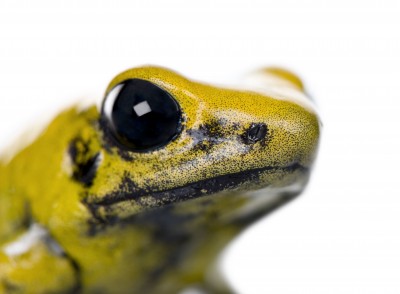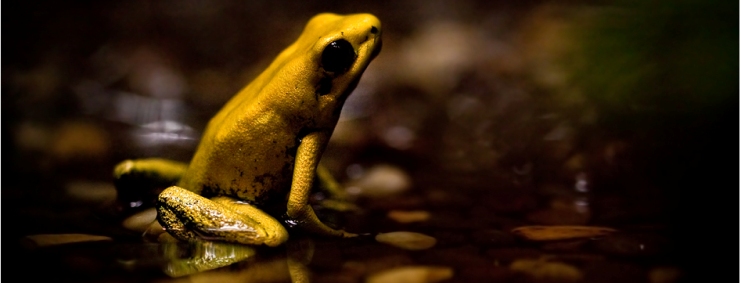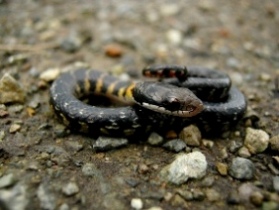Interactions
Phyllobates terribilis is a very rarely studied organism within its habitat because of the dangers surrounding it. Colombian drug cartels have made it hard for researchers to gain full access to the area in the last couple of years. However, one thing that researchers have found is that the frog has only one natural predator. Their one natural predator is the Liophis epinephelus. Belonging to the genus Liophis, these snakes are known as "common water snakes". The epinephelus however has built up extreme resistance to the Batrachotoxin. They tend to feed on the smaller, more juvenile Golden Poison Frogs so that they don't ingest as much of the toxin. When approached by any organism they don't hide but simply further the distance between them and their could-be predator.
Along with several other members of the Dendrobatids, the Phyllobates terribilis was found to have been infected with intracytoplasmic chytrid fungi. Chytrid fungi is starting to show as a problem throughout the world in already dwindling populations of frogs. These organisms form a parasitic relationship with their hosts and create patches of sloughed skin and rare dermal ulcerations. Due to the openings in the skin, bacteria and traces of Ranavirus are found to cause fatalities in numerous host frogs. From the Journal of Zoo and Wildlife Medicine I was able to find a study done on the poison frogs and the harmful fungus. The study explained how four types of poison dart frogs, both captive and free ranging, were discovered dead with either lesions or ulcers on their epidermal layer. All off these frogs were found to have traces of Ranavirus and Batrachochytrium dendrobatidis (BD) within their bodies. The studies showed that BD harms Golden Poison Frog the most out of all the poison darts studied. These frogs were also found to have their dermal layer thickened by two to six cell layers causing their exchange of oxygen and carbon dioxide through skin layers to be inhibited.
The Golden Poison Frog is used by the Choco Embera Indians as a way to poison their tips of their spears. This is where the name "poison dart" was actually derived from. The Indians do not harm the organism in the process. Since the toxins are secreted through its skin glands on its back the Indians simply swipe their spear on the frog back to poison it.
With respect to position: photos courtesy of Twan Leenders and Wolfgang Buitrago González




